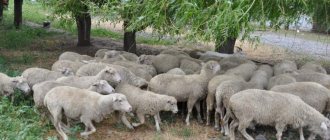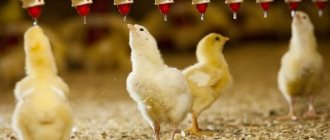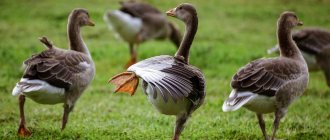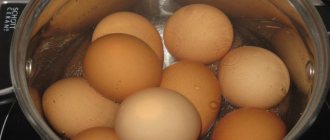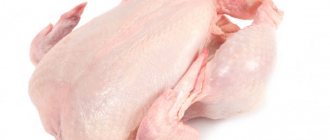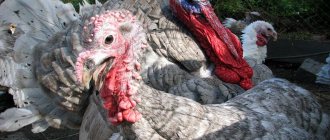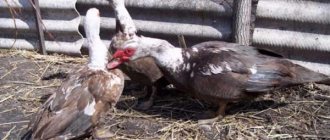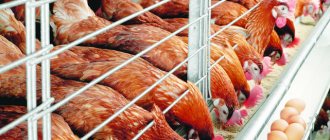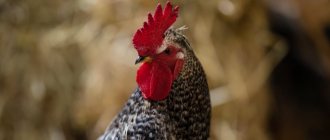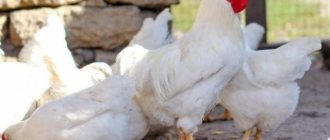Turkey breeding as a business has excellent prospects. Turkey meat is becoming increasingly popular and rightfully takes up more and more space on the dinner table. This is not surprising, because turkey is not only the most dietary type of meat, but also contains a lot of useful substances, thanks to which it becomes more popular every day. Where there is demand, it’s time to create supply!
Keeping turkey poults
Rules for keeping turkeys
Small and delicate chicks are very sensitive to the environment, unlike adults, so it is worth considering several important rules:
- the temperature of the content is 33 degrees Celsius from the first to the fifth day of life, 27 degrees until the tenth day and then gradually decreasing to 23 degrees;
- Chicks react poorly to sudden temperature changes and strong drafts;
- There is no need to let the chicks out for a walk in rain or dew until they are five weeks old. At this age, skin growths form on the necks of the chicks. Make sure that they never get wet outside;
- Avoid damaging the beaks of the chicks. To do this, a cardboard bedding is laid under their food, and a hard base will lead to damage to the beak and guaranteed death;
- protect the chicks from adults on a flat surface without holes, so that the babies are less injured;
- To avoid various diseases and injuries, you should not place them together with other types of chicks. The development and adaptation of turkey poults is slower than, for example, that of chickens.
Lighting and temperature
Young chicks should be exposed to light all day and night for the first three days of life. After this, they can spend no more than 30 minutes a day in the dark. Starting from the 20th day, the bird needs 15 hours of light.
The temperature regime required for the bird directly depends on the characteristics of the breed. However, young chicks must be treated with care. They should not be allowed to become hypothermic. You need to ensure that there are never drafts in the room. Birds are extremely sensitive to them and can easily get sick.
In all other respects, turkeys are quite unpretentious. If you clean the cages, feed and care for the birds daily, the results will not be long in coming and very soon you will be able to make your first active sales.
Is it profitable to grow
Raising turkeys at home is a profitable business
Raising turkeys at home can be called a very profitable business. Individuals of some meat breeds easily gain up to 30 or more kilograms of net weight, while the share of meat is up to 80% of the total weight of the bird. Turkey meat is very healthy from a dietary point of view. It contains no cholesterol, but contains healthy amino acids and microelements in large quantities. Meat is low in calories and is easily digested by the body. For its beneficial qualities, turkey meat is recommended for young children and pregnant women. Turkey liver is very useful in dietary nutrition due to its high content of folic acid. Turkeys are not picky about their diet, so there are practically no problems with feeding. At the same time, turkey meat is noticeably more expensive than chicken.
Advantages and disadvantages
In general, when breeding turkeys at home, you can sell the following products:
- meat;
- eggs;
- down and feather;
- young birds.
Breeding turkeys for meat is a profitable business. Birds consume little feed per kilogram of live weight; in addition, under normal climatic conditions, turkeys grow and develop well using pasture in free-range breeding. Adult turkeys are very unpretentious in terms of diet and living conditions.
An adult bird is unpretentious to living conditions
Despite the fact that turkey eggs are larger than chicken eggs, do not contain allergens and are very nutritious, poultry farmers rarely produce this product. Turkeys produce 3-4 times fewer eggs than laying hens, so to obtain marketable batches of eggs it is necessary to maintain a large number of livestock. Down and feathers can also be considered an additional source of income, although on a smaller scale.
The main disadvantage of raising turkeys at home is the high mortality rate of small turkey poults. There are a number of requirements and restrictions when raising young turkeys. Only if all necessary conditions are met, this business can provide real profit.
What is needed to open a mini-farm?
No farm would be complete without a spacious poultry house for pets. Turkeys are quite large pets. Females should be kept separately from males. Birds of different sexes prefer different care and diets.
When planning the area for the barn where future pets will be kept, it should be taken into account that the minimum area of the territory in which birds will comfortably live is one square meter per individual.
The poultry house must be well insulated; birds cannot tolerate dampness in the room. Due to the dampness and temperature changes, birds may get sick. Common problems caused by non-compliance with comfortable living conditions are viral and respiratory diseases, diarrhea, digestive system disorders, and parasite infestation.
Also, in drafts and damp climate of the floor covering, birds experience loss of legs, bending of limbs, up to complete atrophy. It is almost impossible to cure such a disease, so the organization of conditions for keeping birds should be treated with extreme care. The life of the individuals, the rate of body weight gain, and the success of the business of creating a mini-farm as a whole will depend on the living conditions and the prepared diet.
About
Choosing a turkey breed for breeding
30% of business success depends on the correct choice of turkey breed. You shouldn’t immediately strive for big profits with little experience. It is easier to start breeding turkeys with light breeds (males weigh 10-13 kg), since they have a higher survival rate and require less care. Light breeds of turkeys are even used to raise them in cages like chickens. Heavy breeds are suitable only for walking or aviary breeding.
Uzbek field turkey. This breed is a leader in terms of high livestock survival rates. It belongs to the light category: males weigh 10-12 kg, females weigh 5-6 kg. This breed has low egg production (60 eggs per year), but very high survival rate and unpretentiousness when rearing. The Uzbek field turkey can be kept in polycarbonate greenhouses in winter. In a cold winter at minus temperatures of -20 degrees, polycarbonate greenhouses with turkeys without heating maintain a temperature of +10. For the Uzbek field turkey, this is still within the comfort zone. And most importantly, the room where turkeys live has significantly less moisture than where chickens and especially geese live. And in the summer, with the free-range breeding method, the Uzbek field turkey in the fields and meadows provides itself with up to 50% of the feed. The disadvantages of this breed include a feature characteristic of all breeds with high survival rates - a low hatching percentage of turkey poults - 68%. The strong shell carries out natural selection even at the hatching stage of the chicks. The strongest chicks hatch and have a high survival rate of up to 95%.
After gaining experience, you can test your skills on more profitable breeds with high meat gain.
White broad-breasted turkey of heavy category Big-6. The weight of males in some cases can reach up to 30 kg, and females up to 15 kg. The breed has a high egg production - 90-120 eggs per year. But due to the large weight of males, the eggs are poorly fertilized. In industrial production, turkeys are artificially inseminated.
These birds provide a lot of healthy, dietary meat, feathers and down. Moreover, due to high rates of meat growth, they require less costs for purchasing feed.
Calculation of profit and profitability
Let's say you bought 20 turkeys - 10 males and 10 females - at an average price of 200 rubles. You spent 4 thousand rubles. Let the construction and equipment of the poultry house cost the minimum price - 20 thousand rubles. (the premises can be improved over time from the profit). 12 thousand rubles were spent on food. In total you spent 36 thousand rubles.
At the end of the season, half of the adult birds can be used for meat. Over 4–6 months, the average weight of one bird is 15 kg. If you sell 10 turkeys at 200 rubles/kg, you can get 30 thousand rubles. arrived. Part of the money will go to purchase feed, about 2 thousand rubles. - for the purchase of turkey poults.
In total, we have about 16 thousand rubles. net income from the first sale.
Good income can be obtained from selling eggs. 1 egg for incubation costs 100 rubles. On average, 1 female can lay 80 eggs per year. So, by selling the eggs of one female, you will receive 80 thousand rubles. If you sell the eggs of half of your birds, you will receive 400 thousand rubles.
Part of the money will go to expenses for the next season (purchase of young animals, feed), to pay utility bills, etc. The rest of the money can be used to expand the business.
If you add the income from the sale of daily turkey poults, feathers and down, the business turns out to be even more profitable. As you can see, the profitability of the business is approximately 80–90%.
Turkeys breeding turkeys on a personal plot
Most often, people raise chickens and geese on farms and private country houses. As for turkeys, many are sure that this is an exotic breed of bird. There is some truth to something. It is rare to find turkey meat in a regular store. If it is sold, it is in large hypermarkets, and then only in frozen form. Buying a turkey at the market is also not an option.
It is best to raise turkeys on your own plot, especially since this is not a difficult task, but a profitable one. In this section we will talk about the best turkey breeds. This bird came to our country from America, where the Spaniards brought it from. Since then, farmers have become increasingly interested in this bird. It is grown not only by professional farmers, but also by beginners. Despite the fact that the best breeds of turkeys are whimsical, this does not scare farmers.
In our section you will learn about all the beneficial properties of turkey meat. It is highly valued on the market and is expensive. Therefore, raising this bird brings great benefits.
On average, the weight of a turkey reaches 14 kilograms. Many breeds of birds were bred in our latitudes. For example, the most common breed is the black Tikhoretsk turkey. There is a breed of “bronze” turkey, which weighs up to 8 kilograms. Each breed of turkey needs special care. Our experts will tell you in detail about each breed. You'll learn which ones are suitable for growing year-round and which ones are best used as a source of meat throughout the season. Practical advice will help protect birds from diseases, as well as from winter cold. We give recommendations on creating a shelter for birds, creating heating, lighting, and so on.
In addition, we have collected a lot of information about broiler turkeys. You will understand in what conditions they need to be kept in order to get the desired result. For those who raise poultry themselves using the incubation method, there is also a lot of useful information.
www.fermeru.pro
Product sales and distribution channels
To make a profit from your business, you need to properly set up distribution channels. This meat is in demand at any time of the year. It is most convenient to sell it through markets, because large supermarkets are often tied to long-term contracts with large poultry farms.
The principle of word of mouth will only work if the meat is of high quality, but do not forget that you can sell meat by order, via the Internet to cafes and restaurants. Naturally, for this it is necessary to analyze the pricing policy and collect the necessary certificates.
Advertising can be done on special farming portals or on social networks.
Things to consider
In most cases, farming business is started by people who are already involved in housekeeping. This is a troublesome and complex matter where it is necessary to take into account the specifics of the activity. When breeding turkeys, you should understand that there are three main problems - the high risk of diseases in young animals, the food supply and the sale of finished products. You also need to carefully plan all the necessary outbuildings and organize the space productively. You should officially register your enterprise.
What documents are needed
In recent years, the Russian Federation has simplified the collection and preparation of documentation for beginning farmers. One of the key points is the ability to raise birds for sale on your own plot of land in compliance with all sanitary and environmental standards. You should obtain the status of an individual entrepreneur and choose a form of taxation. To freely sell meat, the following minimum documents are required:
- certificate of conformity to GOST;
- certificate from the veterinary service (form No. 2);
- declaration of product quality conformity;
- registration of breeding individuals (for the sale of purebred birds).
An example of a certificate from the veterinary service (form No. 2).
Even at the preparation stage, it is recommended to conclude agreements with sales points. These can be both small entrepreneurs and large chain stores.
Growing technologies
The profitability of breeding poultry depends on the method of keeping. The following approaches are suitable for industrial rearing of turkeys:
- Extensive. Usually used for seasonal bird breeding in the southern regions. Turkey poults are kept in a warm room from the first days of life, and then released onto pasture, where they quickly gain weight. At the end of the season they are slaughtered. This method requires shelter, drinkers and feeders, as well as a spacious walking area of 4 hectares for 1000 birds;
- Floor. Suitable for small farms with a well-equipped poultry house. Turkeys are usually kept in a spacious room divided into several zones. Sawdust or hay is used as bedding. The bird density is 3-5 birds per 1 m2;
- Cellular. Suitable for raising small breeds, as well as young animals for quick fattening. The cages are placed on the floor or racks in a well-ventilated and heated barn. Crowding of birds is similar to the floor method, but using cages you can save space in the poultry house.
To create a profitable business, it is recommended to combine all three methods. For example, the extensive type is suitable for long-term rearing of birds for breeding, the cage type is suitable for quickly obtaining meat, and the floor type of rearing is universal.
Cost and profitability of buildings and equipment
222
- sand-cement mixture for the foundation;
- wooden beams and slats;
- metal grid;
- roofing material (metal tiles or slate);
- insulation;
- two frames for windows, glass;
- door to the poultry house;
- floor bedding (sawdust or hay);
- fastening material;
- heaters with power from 3 to 6 kW;
- thermometer and hygrometer for microclimate control;
- 2-3 drinking bowls;
- feeders (2 pieces for 50 turkey poults).
In addition, at this stage it is necessary to plan whether an incubator will be required, as well as equipment for mixing and preparing the feed. The cost of building materials varies greatly depending on the region of residence.
On average, in Russia, the construction of a turkey poultry farm with an area of 40 m2 will require 200 thousand rubles.
Tools and materials
The optimal solution for a poultry house would be the type of construction made of wood. This is explained by the fact that wood is an environmentally friendly material that is widely available. Wooden buildings retain heat better than dwellings made of cinder blocks or bricks.
To build a turkey house, you will need the following tools and materials:
- screenings or river sand;
- cement;
- metal fittings with a diameter of 12 mm;
- knitting wire;
- waterproofing material;
- wood and lumber;
- fasteners;
- slate or metal profile;
- insulation;
- vapor barrier material;
- tape measure and level or regular level;
- drill;
- power saw and jigsaw;
- angle grinder (“grinder”);
- hammer;
- shovel and other common construction tools.
All tools and materials can be purchased on the building materials market.
The second option is to purchase a ready-made structure and install it in the chosen location. You will need to arrange the paddock for walking yourself. The approximate price for a summer turkey poultry house, intended for keeping 5-10 individuals, ranges from 53,000 rubles.
What to consider when building a business
The profitability of raising turkeys largely depends on the quality of the organizational work carried out:
- Registration of permits.
- Choosing a bird breed.
- Preparing the premises and tools.
- Studying technological aspects.
If a newly minted businessman does not have experience in raising turkeys, and money for hiring a technologist is not included in the business plan, then it is worth spending several months raising a trial small flock of birds at home. And only after gaining experience can you take on a larger-scale undertaking.
recommended articles:
Investments in raising turkeys pay off within two to five years.
When planning to open a mini-farm, you should also choose the direction of activity:
- Egg trade. To do this, you need to form a herd in which there are from 6 to 8 females per male, whose egg production is up to two hundred eggs throughout the year.
- Sale of chicks. Turkey poults are ready for sale when they reach four to six weeks of age. This direction can bring the greatest profit, but there are difficulties here, such as seasonality and the difficulty of finding a stable distribution channel.
Turkey chicks
- Sales of meat. The profitability of this direction is quite high, but it requires much higher expenses than the previous two, since feeding a large number of adult birds will require appropriate premises and a significant supply of feed. The male reaches marketable size (5 - 21 kg) in 20 - 26 weeks, females - in 20 - 24 weeks. The work of your farm can be considered good if the bird gains weight steadily - the male by 0.14 kg/day, and the female by 0.09 kg/day, and does not get sick. It is most profitable to fatten turkeys in the spring and summer, and sell them before winter. This way you can save a lot on feed and heating.
- Breeding turkeys for breeding. The method is characterized by high costs, complexity and risk. Therefore, it is practiced separately very rarely, and in most cases it is combined with other directions.
Whatever direction is chosen, maximum success in it and decent income can be achieved only by devoting maximum time and effort to it.
Preparation for project work within the framework of a business plan for raising turkeys
Project work requires the implementation of preparatory measures of an administrative and organizational nature. Their timely implementation allows you to more quickly implement the stages of a business plan for breeding turkeys and reduce the time from the beginning of design to the opening of the farm:
- Complete the registration steps and register the company for tax purposes.
- Open a current account.
- Select a region for production, taking into account the proximity of the food supply, the cost of land and resources, and the presence of large logistics hubs.
- Obtain permits from the sanitary, epidemiological and fire authorities.
- Explore the technology of care, feeding, and breeding.
- Study job vacancies in the labor market to determine personnel requirements.
About food
Not only productivity, and therefore your income, but also the health of turkeys depends on the quality and correct amount of feed
The nutrition of turkey poults and adults is significantly different, which is important to take into account in the process of keeping
Turkey poults
As a drink, from the first days of life, chicks are offered green tea with the addition of 1 tbsp. spoons of sugar for every liter. Starting from day 4, turkey poults can be switched to regular water.
This article will tell you what to feed turkey poults.
Young animals
From 60 days of age, the diet of turkey poults can be varied. Usually they are fed with feed for young birds, or the ingredients are steamed to form a porridge. From now on, you can give dry or fresh herbs, legumes, root vegetables and cake. Meals should be 4-5 times a day in small portions.
Adults
Turkeys are picky eaters, so you need to be very careful when it comes to feeding. It is best to purchase ready-made feed, which contains all the necessary substances. If you cook your own food, it should include:
- roots;
- legumes, cereal grains (up to 70% of the total diet);
- meal and cake;
- greenery;
- meat and bone or fish meal;
- sprouted grains and yeast.
Learn about feeding turkeys from this material.
Feeding is carried out 3 times a day, in winter it is necessary to give additional mineral supplements. These can be purchased compositions, or poplar or linden leaves.
Commercial offers
If you are a manufacturer or supplier of equipment, an expert or provide a franchise in this field, then write to us through the Contact page. Below we will post information about your offer and your contacts.
→ 27.02.2016
Attention!
The page publishes only reviews that are useful to others and indicate that the person had experience in this matter.
Thank you very much in advance if you share your precious experience with our readers! :)
Benefits of Breeding
As a result, the question arises again: is turkey breeding profitable as a business? It is worth repeating that with proper maintenance and feeding of the bird, the turkey reaches slaughter weight within 5-6 months. And since the main goal of any farmer who grows and breeds turkeys is to obtain dietary and tasty meat, the period of keeping the bird is not so long. Turkey eggs can also be sold, or they can be used for further poultry breeding, although a novice poultry farmer needs to gain sufficient practical experience before starting breeding from eggs.
Let us recall the main arguments in favor of raising poultry for business.
- On average, one turkey produces 90-120 fairly large eggs per year.
- With proper care and maintenance, turkeys grow faster than broilers, geese and ducks.
So we can draw several conclusions: firstly, raising and breeding turkey poults is fully justified by its tasty and dietary meat. The amount of meat produced is quite sufficient to generate income even if the farm is not too large. Turkey meat is so healthy that it is in much greater demand than chicken or duck meat.
But, secondly, breeding this bird is a rather difficult task; it requires a lot of effort and attention. Therefore, a new farmer should think carefully about his options before turning to turkeys rather than chickens or ducks.
Additional recommendations
When building and arranging a turkey poultry house, it is advisable to use the following tips:
- Treat all wooden materials with antifungal impregnations and moisture-repellent agents. This will extend the operational life of the building.
- It is advisable to sand the wood to protect birds from splinters and splinters.
- With a large suburban area, it is possible to release turkeys to graze not in a pen, but in freedom. In the evening they will return to spend the night.
- Seal cracks in the wooden floor with silicone during the construction phase to prevent moisture from penetrating and accumulating inside.
- Do not make the ceiling in a turkey house without a heating system more than 3 m high. In winter, the birds will freeze, because all the heat will accumulate at the top.
Building a building for keeping turkeys is a serious matter, but it is doable. Consult with specialists if you have any doubts. It's better to do it well once than to redo it several times. With a responsible approach to construction, birds will live and develop in comfortable conditions.
0
0
Copy link
Enterprise planning
Any business begins with planning, including a farm. To begin with, it is better to start raising turkeys at home as a business in rural areas. If you have your own plot of land and outbuildings, then the plan will look something like this:
- Purchase of one-day turkey poults in the amount of 20 birds in the spring. Their cost will be, for example, 2000 rubles.
- With proper care and temperature control, at the beginning of autumn the weight of one bird will be on average 15 kg.
- Half of them, that is, 10 heads, can be slaughtered for meat for sale. Selling dietary poultry meat is not difficult; it is always in great demand.
- The remaining birds must be left to form a flock. By the way, if you have the opportunity to walk turkeys outside, then the cost of feed and vitamins will be noticeably lower.
- Turkeys, unlike most birds, are very sensitive to their offspring, so you won’t need an incubator to breed them. Females will hatch the chicks and care for them.
- If you organize production and carefully care for the herd, one turkey in 5 years can produce offspring, from which you can get a total of 600 kg of meat.
The main task is to organize normal living conditions for turkeys. Adult birds can easily tolerate lower temperatures, so rearing can be organized even in the northern regions.
Expense and income
The main expense is premises. Turkey is a large bird, so one unit requires at least two square meters of space. For 20 turkeys you need at least 40 square meters. m. premises. The premises must be insulated and equipped. If you do this from scratch, then:
- The construction of outbuildings will cost no less than 200,000 rubles.
- Equipment and insulation – no less than 50,000 rubles.
In total, the minimum investment for furnishing the premises will be about 250,000 rubles.
Here's an example:
- Purchase plus feeding for 4 months will require approximately 12,000 rubles, profit from the first sale – 45,000.
- There is no need to buy chicks the next time. One turkey at a time hatches up to 16 chicks, which after 4 months can be sold for 72,000 rubles, and only 8,000 will be spent on rearing for the entire period.
- If not one turkey, but three at once produce offspring of 16 units, the income from them will already be equal to 192,000 rubles in 4 months.
The only negative is that it is necessary to expand the space and build new premises. Therefore, to start this type of business, you should take care of a large plot of land.
As you can see, turkey breeding as a business is a very difficult but profitable business. To the question whether it is profitable to raise turkeys for selling meat, the answer can be yes. After all, turkey meat can be found in almost every major store. The only negative is that with increased competition, product prices may begin to decline. In this case, the cost of maintaining the poultry will remain the same, and the profit will be noticeably lower.
Study of general market and industry trends
In the process of studying, it is necessary to understand what consumers actually want and to what extent their needs are being met at the moment. This will highlight the competitive advantages of the company and the product and take them into account when further drawing up a business plan for turkey breeding :
- dietary properties with taste characteristics close to good types of meat, for example, beef;
- the cost is slightly higher than the run-of-the-mill chicken;
- various types of cutting - from whole carcasses for baking to portion cutting;
- use of natural feed and components for feeding;
- working with buyers of various levels - from individuals to trading holdings.
Alternatively, you can also consider raising ducks. A duck farm business plan for breeding and raising Muscovy ducks includes information for starting this business. Duck meat is also considered very healthy, which is why there is also a demand for it.
Advantages and disadvantages of business
Small farmers often breed turkeys for personal use or to sell the meat. Growing turkeys as a business is valued for the following advantages:
- Rapid growth of birds;
- Savings when purchasing feed;
- Large weight of meat;
- Possibility to use fluff, feathers, droppings for other purposes;
- Undemanding to the environment.
In addition to a number of advantages, there are disadvantages inherent in turkeys:
- If the business is aimed at obtaining eggs, then it is worth considering that the egg production of turkeys is less compared to chickens;
- Frequent illnesses;
- Tendency to obesity;
- Demand for clean water.
Breeding turkeys at home
Poultry farming is a profitable field of activity. Today, many people are purchasing dietary meat, as the popularity of proper nutrition is growing. The market is overflowing with offers for the sale of chicken meat. But turkey meat is not so common. Therefore, raising turkeys at home for novice businessmen is relevant in many areas. But you need to properly organize the entire process and follow the necessary requirements.
Business relevance
Turkey breeding –
it is a profitable and cost-effective business idea. With little expense and no experience in livestock farming, you can organize a mini-farm and gradually expand, increasing your income.
Business advantages:
- High level of demand;
- sale of a healthy dietary product that contains protein, proteins, vital amino acids and other beneficial substances with a minimum composition of fatty tissue;
- low competition in the segment;
- heavy weight (broilers grow up to 30 kilograms);
- the possibility of selling related products (offal, eggs, droppings for fertilizing the land);
- the opportunity to combine business with another area of poultry farming (breeding chickens, geese, ducks, etc.);
- greater resistance to diseases.
Video on the topic:
More about turkeys
Turkey production
Turkey breeds suitable for breeding as a business
The Bronze Broadbreasted Turkey is one of the best bird breeds to raise for processing and sale. Females of this species grow up to nine kilograms, and some males reach fifteen kilograms in weight. This breed was first crossed in America, and only after that it became popular for breeding in Russia.
The main disadvantage of the bronze broad-breasted turkey is that it can only be kept in cages; it is not intended for pasture. The breed's egg production can reach 120 eggs per year. Usually 75% of them hatch. Birds reach their nominal weight already at 20-23 weeks of life, and even then they can be slaughtered for meat.
A good turkey option for pasture rearing is the North Caucasian Bronze breed. Males of this species weigh up to 14 kg, while females weigh 7 kg. They begin laying eggs in the ninth month of life and can last up to six months. During this time, the female can produce approximately 80 eggs.
The White Broad-breasted breed is distinguished by high growth rates. Turkeys of this species easily adapt to environmental conditions. The beginning and duration of egg production coincide with the North Caucasian bronze, but females produce more eggs, up to 120 per period. Birds of this species are distinguished by their high mass, males weigh up to 25 kg, and females - 10 kg.
The BIG-6 breed is characterized by rapid growth. It is specially designed for growing for slaughter. Its males weigh up to 25 kg, females up to 11 kg. BIG-6 has the highest ratio of normal to slaughter weight, reaching 85%. No other animal can compare to this.
But this breed has one significant drawback. The BIG-6 male is so much larger than the female that natural insemination becomes impossible without injuring the latter. Therefore, artificial insemination is used to breed this species. This makes it difficult for BIG-6 turkeys to breed.
A poultry farm can have two directions of operation: independent breeding of turkeys or purchasing chicks with subsequent rearing. One egg will cost from hundreds of rubles, depending on the breed. To hatch them you will need an incubator. For a thousand eggs it costs approximately 25 thousand rubles.
The price for one day-old chick starts at 150 rubles. Every day it increases. Almost all poultry farms have a defined egg hatching schedule. This is a convenient system, because the time for purchasing chicks is known in advance.
Due to this functioning of the poultry farm, there is a need for a machine to transport them. It is also possible to transport other cargo, such as equipment or feed. A minibus suitable for this business costs half a million rubles. This is a significant amount, but successful business management will allow it to be repaid.
Breed selection
To get a profitable business with high productivity, you need to choose the right breed of birds. Various breeds are offered on the agricultural market, which are characterized by various qualities of egg production and weight gain. If you want to have a wide range of products sold, then you can keep poultry to sell meat and eggs. But when choosing a breed that is an egg-laying species, you should not expect a large increase in weight.
Today the following common turkey breeds are known:
- Bronze broad-breasted - birds bred on the American continent, but are very popular in Russia. The weight of females can reach 9 kg, and males can weigh 10-15 kg. To obtain meat, slaughter occurs at 20-23 weeks. You can get 120 eggs from this breed during the initial breeding period. The only drawback of the breed is its inability to be kept on pasture, since when they were bred they were adapted to being kept in cages and poultry houses.
- North Caucasian Bronze – adapts well to pasture keeping. The weight of males ranges from 12-14 kg, and females reach 7 kg. The breed's egg production is 80 eggs during the first breeding period.
- White broad-breasted - birds are characterized by high endurance when kept in various climatic conditions. Males can weigh up to 25 kg, and females – 10 kg. The breed produces eggs from nine months to a year. Number of eggs – 120 pieces.
- Cross BIG-6 is a breed with a narrow specialization, namely for producing a large amount of meat in a short period of time. Females gain weight up to 11 kg, and males - 25 kg. The disadvantage of this breed is the need for artificial insemination.
Broiler type of turkeys BIG-6
Having chosen a suitable breed, you can calculate the approximate revenue from trading. At the initial stage, one male and five females are acquired. Then you can buy more turkeys.
When choosing, you should take into account the age and health of the birds. Individuals must be from different families in order to produce strong, healthy offspring. Turkeys are sold on special farms.
Turkey Farm Staff
For the normal functioning of a turkey farm, specialists in this field are needed. And the larger the scale of the business, the more staff is needed.
Personnel must include:
- Veterinarian. He can be a stationary worker or come as needed.
- Zootechnician - a person who will monitor the technical aspects of the farm. Set up an incubator? This is for him. Turn on the right temperature? Him too. All aspects and technical nuances of the farm depend on the qualifications of this person.
- Manager. These responsibilities can be performed by the farm owner himself, or he can hire an administrator.
- Courier. Delivering goods to the buyer, bringing food, transporting meat, and so on - all this is the job of the courier. Although, of course, the farm owner himself can do it.
- Poultry care workers. Even a farm with a thousand turkeys needs at least two of these workers.
Raising turkeys for meat at home
Turkeys are large birds, and with the correct selection of the breed, you can get up to 30 kg of meat from one individual. But in order for raising turkeys for meat at home to be successful, you need to take into account some features of the process.
First of all, you need to choose the right breed.
Figure 8. Types of homemade feeders for turkey poults
It is better to give preference to large crosses (for example, Big-6), which have low egg production but quickly gain weight.
What is needed for this
Raising turkey poults for meat at home for beginners requires the correct selection of individuals. To do this, strong and healthy individuals are selected and placed in a brooder with stable temperature and humidity.
It is necessary to take care of the optimal microclimate of the poultry house. It should be warm, but there should also be a constant flow of fresh air. Turkey poults are very sensitive to toxic gases, and if exposed to high levels they can die.
Figure 9. Example of a diet for fattening turkeys for meat
In addition, it is necessary to ensure the correct lighting mode by extending the light cycle with lamps. You also need to take care of the quality of feed (Figure 9). This requirement applies to both young animals and adults. For fattening for meat, it is better to use special industrially produced feed. They are balanced in nutrients and vitamins. You can make compound feed yourself, using several types of crushed grain and mineral supplements.
Which breeds are best suited
Meat breeds of turkeys or large crosses are suitable for fattening. These breeds include the broad-chested white and the Big-6 cross.
These breeds were bred by breeders specifically for fattening for meat. Birds quickly gain weight, and the slaughter yield is several tens of kilograms.
Rules and features
Growing meat turkey breeds does not differ significantly from other species. Birds also require walking and a balanced diet.
Figure 10. Features of keeping turkey poults and Big-6 cross turkeys
Since birds quickly gain weight, wet mash and grain feeds are most often used for feeding them (Figure 10). Many poultry farmers prefer industrially produced feed. But this feeding option has a significant drawback - the high cost and high consumption of ready-made feed. Therefore, compound feed is often prepared with your own hands, using crushed grain with mineral supplements.
We definitely walk the turkeys!
Walking turkeys is a mandatory condition that must be observed if you are breeding these exotic birds. Birds lacking fresh air suffer from depression and visual impairment. In birds, fat quickly accumulates, metabolism is disrupted, and slow atrophy of the muscular system occurs.
When building a poultry house, you should immediately think about where the extension for the aviary will be. It is recommended to choose a bright, well-lit room. Birds love spacious walking areas, well lit from all sides and protected from the winds. You can fence the perimeter of the aviary for walking, so that the birds will not be negatively affected by wind and slanting rains.
It is important to remember that turkeys do not like dampness! Often, outdoor enclosures are fenced not only around the perimeter, but also covered on top with a metal mesh. This must be done so that the birds do not fly away from the house. Despite their impressive weight, turkeys can easily fly over a height of three to four meters.
When building an enclosure, the minimum area should be taken into account. It should be one and a half to three square meters per adult. In any case, for at least thirty adult turkeys you need to build an enclosure for walking of at least fifty square meters.
YouTube responded with an error: The request cannot be completed because you have exceeded your quota.
Basic requirements for the premises
How to set up a turkey house
It is worth taking care in advance about suitable housing conditions, especially in the cold season, otherwise all the work on raising turkey poults will be in vain.
- In winter, you need to insulate the room as much as possible. Cover the floor with dry straw and trample it down, and when the temperature drops to -10, provide the house with an additional heater.
- In the summer, ensure the room is ventilated (without drafts) from dampness and excess air humidity.
- Lighting in winter lasts about 14 hours a day, and additional lighting will increase the egg production of adults.
Walking turkeys
Birds love long walks; they also run quickly and can fly when in danger. Considering their behavior, they need a large space in the form of a mesh enclosure or a quiet and calm neighborhood; if this is not available, it is worth carefully trimming the wings of adult individuals.
Walking turkeys
Walking is a must and will only benefit the birds. By foraging on their own, they will receive more nutrients, and the presence of bushes or trees will protect them from the scorching sun in summer. When walking in an enclosure, you need to create artificial shade in one of the parts of the fence and take care of the availability of water. At the beginning of the second week of life, the chicks are released for a walk for about 20 minutes, which will be enough for the first time, given the good windless weather. With each subsequent time, the walking time increases
Monitor the weather at this time so that the chicks do not catch a cold. Important! The chicks are released for full-scale walking only after the appearance of real feathers.
On the street walk, drinkers with water and feeders with food are placed, just as in a closed enclosure. Already at one and a half months, birds will begin to use nests, so they are installed indoors at a height of 45 cm and 35 cm in diameter per individual. It is necessary to let turkeys out for a walk not only in summer, but also in winter in windless weather of at least 25 degrees, having previously spread straw in this place to avoid frostbite of the birds’ limbs
Also, to attract them for a walk, you can lay out brooms of dried nettles and bundles of hay for a long meal and a long walk, prepared in the summer.
Equipment for creating the proper microclimate
Ventilation
Raising turkeys: how to make ventilation?
The main task of ventilation in a poultry house is to ensure high air quality and remove excess carbon dioxide and water in a timely manner. The main consequence of insufficient ventilation is wet litter. If the ventilation level is set too high, a lot of dust will form inside.
Most modern farms install mechanical ventilation systems. In this case, air movement is ensured by the operation of fans. Installing mechanical ventilation systems requires an initial investment in equipment, but it is possible to create a controlled bird habitat. When installing fans, it is useful to follow the rule that their performance exceeds the estimated requirements for birds by about 20%, because... During operation and contamination of equipment, the level of ventilation decreases.
The ventilation modes used depend on the time of year (minimum in winter, maximum in summer), stage of rearing (brooding, adult stock), weather conditions (rain), time of day (day/night). To ensure proper growing conditions at any time of the day and year, as well as under any climatic and weather conditions, it is important that the ventilation always operates automatically, under the control of a microclimate computer.
Types of ventilation systems:
- Equal pressure systems - the pressure inside and outside the room is the same - these include natural ventilation systems. Their main disadvantage is the inability to effectively control the prevailing conditions.
- High pressure systems are systems based on pumping pre-prepared air into the poultry house through air ducts.
- Negative pressure systems - the movement of air inward is ensured by the creation of partial vacuum in the room. Such ventilation systems are most often found in poultry farming. For this type of ventilation to work, it is critical that the room is well insulated.
Negative pressure
Raising turkeys: how to make ventilation?
Negative pressure is ensured and maintained by the coordinated operation of supply vents and exhaust fans. The required amount of negative pressure is determined by the width of the poultry house. As a rule, a pressure of 1 Pa is required per 1 meter of poultry house width. If the poultry house is 18 m wide, it needs to maintain a pressure of 18 Pa. If a cross-ventilation system is installed in the poultry house, a pressure difference of 2 Pa must be provided for each meter of width, since the air flow will need to travel twice as far. In winter, the required pressure level can be increased by about 10% (since cold air is heavier and must enter the house at a higher speed); In summer, the level of negative pressure can be reduced by about 10% (warm air is lighter). Negative pressure can be measured using an air rarefaction gauge.
AIR SPEED
During the growing and fattening period of turkeys, the air velocity at the turkey level should not exceed 0.1-0.2 m/s, except in cases where the adult bird is experiencing heat stress. In cold weather, drafts can even make turkeys sick.
Air flow
For the effective operation of minimal ventilation, the operation of inlet vents is of great importance. The width of their opening determines the volume of incoming air flow. During the brooding period, a very small volume of air is required, so all the windows should be opened a small width. However, too little air entering through each vent quickly dissipates after entering the house before reaching the middle. Therefore, during this period, fewer inlet vents should be used, but more widely open. The larger the opening of the window, the more air flows through it, the less resistance the incoming flow experiences, the further it moves in the housing.
With the help of deflectors, German air intake vents determine the correct air flow path. The design, location, number and control of air intake vents are of great importance for the correct distribution of air inside the room and protection from drafts.
Heating
Water heaters
Raising turkeys: how to make heating?
The most uniform heating of the poultry house can be achieved using water heaters , which are an affordable solution for farms that do not have a gas supply system. Their main advantage is that they do not produce toxic gases during operation, so very low levels of ventilation can be used during the brooding period. The disadvantage of water heating systems is that they respond more slowly to changes in climatic conditions inside the poultry house. In addition, the equipment requires regular cleaning, since in poultry house conditions a significant layer of dust accumulates on the heating elements, which reduces their thermal conductivity.
Gas and diesel heaters
Raising turkeys: how to make heating?
They generate heat from the combustion of hydrocarbons. These systems are able to quickly respond to temperature changes and provide rapid heating of the air. Heat guns come in direct and indirect heating (i.e. without and with exhaust gas removal). When using indirect heating guns , harmful gases (CO, CO2) and water formed during the combustion process are removed outside the room. Despite these clear advantages, direct-fired gas heat generators are still widely used in industrial poultry houses.
IMPORTANT!
When designing a heating system in a poultry house, it is recommended to install more heaters, but of lower power. The smaller the distance between the heaters, the more uniform the climate will be.
When installing heating guns, it is also important to position them correctly indoors. In this case, it is important to take into account some conditions: the direction relative to the incoming air flow, the distance from the wall and the height of the heater suspension. Heaters should be placed at a distance of at least 3 m from the wall, at a height of approximately 1.7 m. The correct direction of the supply air flow is clockwise to the direction of rotation of the heater fan. This arrangement pushes cold air toward the ceiling, mixing it with warm air. If the flow direction is incorrect, the rotation of the heater fan pushes the incoming cold air onto the floor, not allowing it to warm up enough, creating a draft.
